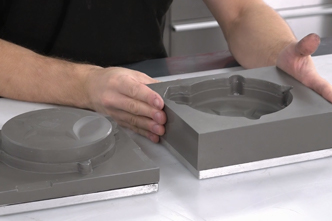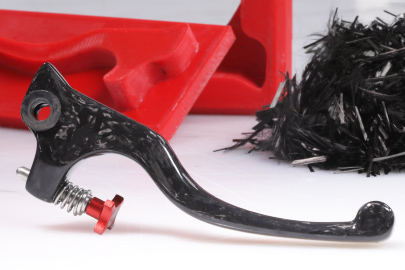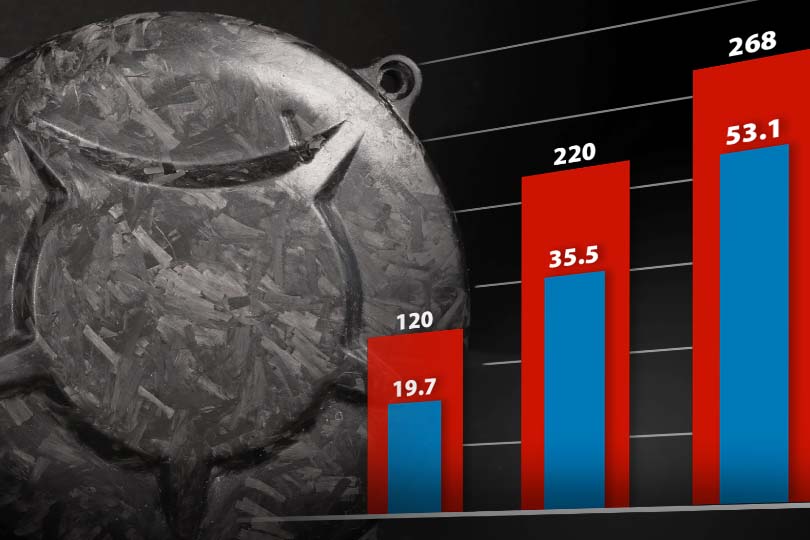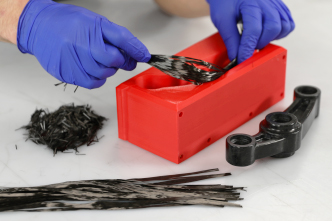Heb je hulp of advies nodig?+44 (0)1782 454499
VIDEO'S IN DEZE SERIE
Deze video is deel 1 van een serie in 4 delen:PRODUCTEN GEBRUIKT IN DIT PROJECT
Hoewel dit niet per se een uitputtende lijst is, werden de volgende gereedschappen en materialen, geleverd door Easy Composites, in dit project gebruikt.
De hoeveelheid die hieronder wordt weergegeven, is de geschatte hoeveelheid die in het project wordt gebruikt, afgerond naar de dichtstbijzijnde beschikbare kitgrootte of hoeveelheid.
ANCILLARIES
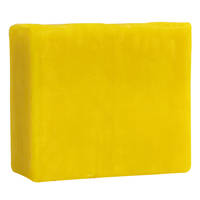
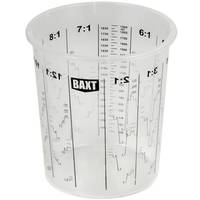
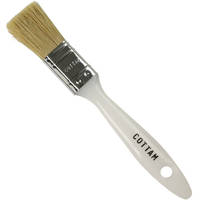
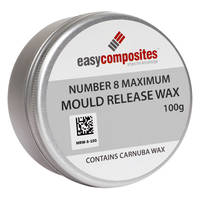
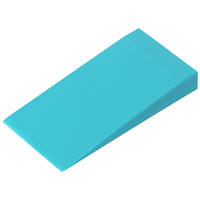
MATERIALEN VOOR HET MAKEN VAN MALLEN
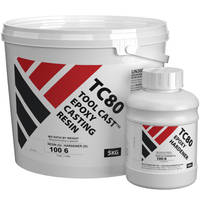
VIDEO HANDLEIDING
Gieten van een Tweedelige Persmatrijs voor Gesmeed Koolstof
WAT JE ZULT LEREN
In deze instructievideo laten we zien hoe je tweedelige matrijzen of compressiemallen maakt die kunnen worden gebruikt om gesmede koolstofvezelonderdelen te maken met behulp van een compressievormproces.
- Voor welke processen is een 'matched tool' persmatrijs geschikt?
- Overwegingen voor de matrijzenproductie
- Het patroon plaatsen en uitbreiden met plasticine
- Gieten van de binnen- en buitenmal met TC80 Tool Cast aluminium gevulde epoxy giethars
INLEIDING
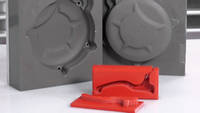
Inleiding
Gesmede koolstofvezel is de term die wordt gebruikt om korte of 'gehakte' strengen koolstofvezel te beschrijven die worden samengeperst in meerdelige matrijzen om sterke vaste geometrieën te creëren die niet praktisch zouden zijn met conventionele composietprocessen.
Compressiematrijzen bestaan uit 2 of meer delen die in elkaar passen en een holte vormen waarin het onderdeel wordt gevormd. In bijna alle gevallen is de matrijs blokvormig om stevigheid te bieden en het klem- of compressieproces praktisch te maken.
De belangrijkste overweging bij het ontwerpen van matrijzen voor dit proces is om een telescopisch deel op te nemen waarbij het mannelijke gereedschap tijdens het sluiten als een zuiger in een cilinder werkt. Hierdoor is er ruimte om de niet-gecomprimeerde vezel te laden en tijdens het sluiten wordt overtollig hars door de scheidingslijn naar buiten geperst, maar omdat het zeer nauw aansluit, kan de vezel niet ontsnappen waardoor je de juiste vezel/harsverhouding houdt. Dit telescopische of 'zuigerachtige' element moet diep genoeg zijn om de mal te laten sluiten voordat de vezel wordt verstoord. De exacte grootte van dit element hangt af van de vorm en het ontwerp van de mal, maar een algemene regel is dat het element minstens 25% van de diepte van het uiteindelijke onderdeel moet bedragen. In het geval van een 2-delige matrijs heeft deze vorm een lichte trekhoek van 2-3 graden nodig om de matrijs gemakkelijk te kunnen scheiden. Bij meerdelige matrijzen is het vaak mogelijk om de matrijs zo te ontwerpen dat deze kan worden gescheiden van een volledig parallelle 'zuiger'.
WAT JE NODIG HEBT
Benodigde materialen en apparatuur voor de compressievorm
RW4 lossingsmiddel
RW4 high build spray release wax is het aanbevolen lossysteem voor compressievormen bij omgevingstemperatuur. Dit lossingsmiddel werkt bijzonder goed bij het van elkaar losmaken van harde vormen en gietstukken, omdat het een dikke barrière vormt die relatief zacht is en dus een beetje kan bewegen tijdens het losmaken als dat nodig is.
Lossingswas
Traditionele gietwas die wordt gebruikt om het originele onderdeel van een coating te voorzien zodat de giethars er niet aan blijft plakken.
TC80 ToolCast epoxy giethars
TC80 is een epoxy giethars ontworpen voor het gieten van een breed scala aan gereedschappen. In dit specifieke geval is het ideaal voor gebruik bij het maken van kleine tot middelgrote compressiegereedschappen voor gebruik in het gesmede koolstofvezelproces.
Plasticine
Plasticine is ideaal voor het verlengen van een patroon om het noodzakelijke telescopische deel te krijgen dat essentieel is voor het samendrukken van de twee malhelften. Het is stevig genoeg om zijn vorm vast te houden tijdens het gieten met hars, maar kan gemakkelijk met de hand gevormd en gladgestreken worden. Het kan ook hergebruikt worden als de mal klaar is.
Fileerwas
Fileerwas en/of plasticine is vaak nuttig voor het afdichten van schroefdraad op boutdraden van matrijzen of voor het opvullen en afdichten van uitwerpgaten in de matrijs.
Polypropyleen blad
Ideaal om zijkanten en flenzen van gietvormen te maken. Kan gemakkelijk in vorm worden geknipt en gelijmd met smeltlijm. Plakt natuurlijk niet aan de meeste harssystemen, wat betekent dat het zonder lossingsmiddelen van de afgewerkte mal kan worden gehaald.
PROJECTVERDELING
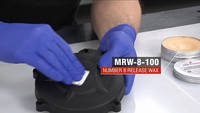
1. Het originele onderdeel van een beschermlaag voorzien
Het originele onderdeel heeft een release coating nodig om te voorkomen dat de hars aan het onderdeel blijft plakken wanneer het uithardt. Breng 5 lagen gietwas aan op het onderdeel en zorg ervoor dat het hele onderdeel bedekt is. Breng elke laag aan en poets deze voorzichtig uit. Laat 15 minuten tussen elke laag.
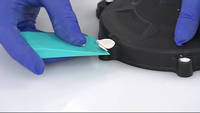
2. Opvullen van gaten of ongewenste details
Gebruik plasticine om gaten of ongewenste details op het uiteindelijke onderdeel op te vullen. De gaten op het deksel zijn gemakkelijker na te boren, dus in dit geval worden ze gevuld met plasticine. Met de ontvormwiggen kan de plasticine snel en gemakkelijk worden bijgesneden voor een nette afwerking van het gevulde gat zonder krassen op het plastic te maken.
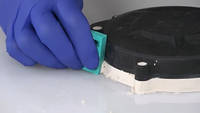
3. Perimeterverlenging creëren
Het is essentieel om een omtrekverlenging in te bouwen waarbij het mannelijke gereedschap zich tijdens het sluiten gedraagt als een zuiger in een cilinder. Hierdoor is er ruimte om de ongecomprimeerde vezel te laden, waarna tijdens het sluiten het overtollige hars door de scheidingslijn naar buiten wordt geperst.
Eerst wordt een basisplaat uit polypropyleenplaat gesneden, wat een ideaal oppervlak is voor het gietproces. Er wordt een grote hoeveelheid plasticine gebruikt om de omtrek rond de basis van het onderdeel te maken. Denk eraan dat bij het snijden van de plasticine een trekhoek van 3 tot 5 graden moet worden aangehouden om het persen en ontvormen aan het eind te vergemakkelijken.
Er wordt een laatste laag gietwas aangebracht om ervoor te zorgen dat het oppervlak glad is en dat de afgewerkte mal gemakkelijk loslaat.
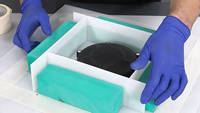
4. De matrijsdoos maken
We gebruiken polypropyleen omdat dit na uitharding vanzelf loslaat van de hars. Snijd stroken van het vel om randen voor de mal te maken. Eenmaal uitgelijnd worden de platen met smeltlijm op hun plaats gelijmd voordat ze met smeltlijm worden afgedicht. Het is essentieel dat de doos volledig is afgedicht zodat de hars niet weglekt. Blokken hout of vergelijkbaar materiaal worden dan aan de buitenkant van de doos gelijmd om extra steun en stevigheid te bieden.
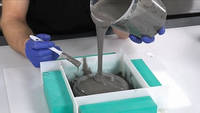
5. De eerste helft van de persmal gieten
De TC80 ToolCast is ideaal voor deze toepassing vanwege het gebruiksgemak en de stevigheid. Meet de juiste hoeveelheid hars en verharder af in een mengbeker. Meng grondig gedurende 2-3 minuten en zorg ervoor dat je de zijkanten en bodem van de beker schraapt. Giet in een schone beker en meng nog eens 2-3 minuten.
Breng eerst een laag TC80 ToolCast aan op het oppervlak van het werkstuk om eventuele oppervlaktespanning te breken en ervoor te zorgen dat er geen harsleemtes of luchtbellen op het oppervlak van de mal komen. Vul daarna op met de rest van de hars. Laat de hars minimaal 24 uur bij 20°C uitharden voordat u probeert de mal te verwijderen.
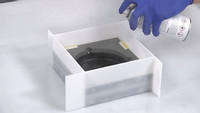
6. Ontvormen en voorbereiden op de tweede gieting
Nu de hars volledig is uitgehard, kunnen we de barrières en plinten verwijderen. Bewaar de barrières, want die worden later hergebruikt. Draai de mal om en schraap de plasticine van de onderkant, waarbij u erop let dat u het originele deel niet verwijdert of ontvormt. Het originele deel moet in de mal blijven om de holte te creëren voor het persgietproces. Als de meeste plasticine is verwijderd, gebruik dan een dun laagje was om de laatste resten te verwijderen,
Vul eventuele gaatjes op en vul ze opnieuw aan om ervoor te zorgen dat ze nog steeds afgesloten zijn met de plasticine voor de volgende gietbeurt. Ook ongewenste details kunnen aan deze kant op dezelfde manier met plasticine worden opgevuld. Om het ontvormen te vergemakkelijken, is het verstandig om wigvormige rijlocaties te maken. Maak een wigvorm met behulp van plasticine en knip en vorm deze met behulp van een ontvormwig. Dit helpt bij het ontvormen, omdat het dan mogelijk is om een ontvormwig in de passende uitsparing te rijden.
De barrières van eerder worden dan hergebruikt om barrières te maken voor de tweede gieting. Dubbelzijdig tape wordt dan gebruikt om ze op hun plaats te plakken en net als eerder wordt smeltlijm gebruikt om de barrières aan de buitenkant volledig af te dichten voor een nettere afwerking van de mal. Ga vervolgens voorzichtig met vullingswas langs de binnenrand van de mal om ervoor te zorgen dat er een afdichting is tussen de barrières en de hars.
De mal moet dan bespoten worden met RW4 Spray lossingsmiddel. Het bouwt een dikke maar enigszins flexibele laag op die helpt bij het ontvormen. Meestal worden 3 tot 4 lagen gebruikt voor deze toepassing. Het wordt niet gebruikt op de A-zijde van de mal omdat het een lichte structuur achterlaat, maar dit is geen probleem op de achterkant van het onderdeel, die niet zichtbaar is wanneer het gemonteerd wordt.

7. Tweede zijde van de mal gieten
Het gieten van de TC80 ToolCast hars gaat op dezelfde manier als bij de eerste zijde van de mal. Meet de juiste hoeveelheid hars en verharder af in een mengbeker. Meng grondig gedurende 2-3 minuten en zorg ervoor dat je de zijkanten en bodem van de beker afschraapt. Giet in een schone beker en meng nog eens 2-3 minuten.
Breng eerst een laag TC80 ToolCast aan op het oppervlak van het werkstuk om eventuele oppervlaktespanning te breken en ervoor te zorgen dat er geen harsleemtes of luchtbellen op het oppervlak van de mal komen. Vul daarna op met de rest van de hars. Laat de hars minimaal 24 uur bij 20°C uitharden voordat u probeert de mal te verwijderen.
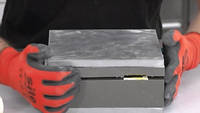
8. Ontvormen en afwerken van de persmatrijs
Nu de TC80 ToolCast hars volledig is uitgehard, kunt u beginnen met het ontmallen. De polypropyleen barrières kunnen gemakkelijk worden verwijderd, zodat de 2-delige mal overblijft. In dit stadium wordt de mal verstevigd voordat deze uit elkaar gehaald wordt.
Om de mal sterker te maken en scheuren bij het ontvormen te voorkomen, wordt op elke helft een legeringplaat gelijmd. De oppervlakken die gelijmd moeten worden, worden zwaar geschuurd met een Perma-Grit schuurblok en vervolgens gereinigd. Onze VM100 zwarte methylmethacrylaatlijm wordt gebruikt om de legeringvellen aan beide zijden van de mal te lijmen en laat ze uitharden.
Zodra de lijm is uitgehard, worden ontvormwiggen in de ontvormopeningen gestoken en gebruikt om de 2 helften van de mal langzaam te scheiden. Zorg ervoor dat de twee helften van de mal gelijkmatig aan elke kant worden gescheiden om te voorkomen dat de twee helften tegen elkaar en het onderdeel in het midden klemmen. Zodra de opening mooi open is, moet het mogelijk zijn om de 2 malhelften met de hand te scheiden.
Wrik de randen van het onderdeel voorzichtig los van de malwand, werk het onderdeel voorzichtig uit de mal en haal het vervolgens uit de mal. Ruim alle resten van was en plasticine op en verwijder eventuele vullijnen of ruwe randen op de mal. Maak de mal grondig schoon voor gebruik. De tweedelige compressiemal is nu klaar voor gebruik om een gesmeed carbon onderdeel te maken.
DISCUSSIE (13)
Laat het ons weten als je vragen of opmerkingen hebt over deze videotutorial.
Hoewel het mogelijk is om doorlopende vezelvormen van koolstofwapening, zoals geweven doek, te persen, zijn geweven versterkingen veel beperkter wat betreft de vormen die je succesvol kunt gieten.
De reden dat dit proces zo goed werkt met gesneden koolstofvezel touw is dat de individuele, korte strengen koolstofvezel vrij kunnen bewegen en zich onder druk in de mal kunnen verdelen. Als je een geweven doek gebruikt, zijn de vezels doorlopend en overbruggen ze het oppervlak van het onderdeel. Als je druk toevoegt, wordt de wapening op zijn plaats vastgezet en kan deze zich niet herverdelen in hoeken, holtes, details enz. Het resultaat, als je een onderdeel hebt gemaakt zoals deze vliegwieldop, is leegte/overbrugging op verschillende plaatsen van het onderdeel. Voor onderdelen die overwegend vlak zijn of slechts lichte contouren hebben, zou je echter kunnen volstaan met een geweven versterking. Een optie zou een hybride aanpak kunnen zijn waarbij je geweven doek op het oppervlak gebruikt en het vervolgens ondersteunt met gesneden touw, waardoor je het beste van beide werelden krijgt. Nogmaals, het hangt af van de geometrie van het onderdeel dat je maakt.
Dit telescopische of 'zuigerachtige' element moet diep genoeg zijn om de mal te laten sluiten voordat de vezel wordt verstoord. De exacte grootte van deze voorziening hangt af van de vorm en het ontwerp van de mal, maar een algemene regel is dat de voorziening minstens 25% van de diepte van het uiteindelijke onderdeel moet zijn. In het geval van een 2-delige matrijs heeft deze vorm een lichte trekhoek van 2-3 graden nodig om de matrijs gemakkelijk te kunnen scheiden. Bij meerdelige matrijzen is het vaak mogelijk om de matrijs zo te ontwerpen dat deze kan worden gescheiden van een volledig parallelle 'zuiger'.
Er zijn een paar dingen waar je rekening mee moet houden als het gaat om de geschiktheid van een prepreg voor een persgietproces. Ten eerste moeten we rekening houden met het harssysteem zelf. Om een prepreg harssysteem geschikt te maken voor gebruik met een tweedelige persmatrijs gemaakt met TC80 Tool Cast hars, moet je ervoor zorgen dat het harssysteem kan uitharden bij een temperatuur binnen de gebruikstemperatuur van TC80, die 80°C is. Hoewel de aanbevolen uithardingstemperatuur voor onze XPREG component prepregs, XC110 en XC130 120°C is, kunnen ze beide *initieel* worden uitgehard bij 80°C (de uithardingstijd zal natuurlijk langer zijn) en vervolgens worden ontvormd (uit de TC80 tool) voordat ze worden 'nagehard' bij een hogere temperatuur om hun Tg en mechanische eigenschappen te verbeteren.
Wat de wapening zelf betreft, zijn conventionele wapeningsvormen zoals geweven weefsel, meerassig en eenzijdig, niet goed geschikt voor persen. De reden hiervoor is dat de wapening moet kunnen 'bewegen' in de matrijs, zodat het delen van de matrijs kan bereiken waar minder wapening is, holtes kan vullen en de dikte van de spleet tussen de persgereedschappen kan aanpassen. Al deze dingen zijn moeilijk te realiseren met een continu vezelformaat. In plaats daarvan is een korte vezelwapening nodig, zoals gesneden touw of gesneden UD prepreg. Op dit moment zijn zulke prepregs erg zeldzaam en we hebben er momenteel geen in het XPREG , maar we werken eraan en hopen ze binnenkort aan ons assortiment toe te voegen.
Ja, inderdaad. In de bijbehorende video (die we hopelijk volgende week uitbrengen) gebruiken we 3D-geprinte mallen, naast deze gegoten mal, om de gesmede carbon onderdelen te maken. Het printen van hars is potentieel goed voor het produceren van solide 3D prints, maar gaat vaak ten koste van de maatnauwkeurigheid, zeker in onze ervaring in ieder geval, maar ja, ze leveren wel een betere afwerking van het oppervlak op.
Vooral dankzij Lamborghini is de term 'gesmeed' carbon de afgelopen jaren gaan verwijzen naar composietonderdelen die zijn gemaakt met willekeurig georiënteerde koolstofvezels met korte strengen die onder druk zijn gegoten. Het verschilt van onderdelen die gelamineerd zijn met meer traditionele vormen van koolstofvezel (d.w.z. geweven koolstofvezeldoek) omdat de kortere koolstofstrengen kunnen bewegen in het laminaat, waardoor ze onder druk complexere vormen kunnen vullen op een manier die geweven of unidirectionele vezels met lange strengen niet kunnen. Het compromis is echter de uiteindelijke sterkte - onderdelen die gemaakt zijn met unidirectionele of geweven wapening met lange strengen zullen sterker zijn en kunnen gebruik maken van geoptimaliseerde vezeloriëntatie (vezels uitgelijnd in de richting waar sterkte het meest nodig is) om onderdelen met betere mechanische eigenschappen te produceren. Kortom, gesmeed koolstof gaat ten koste van de sterkte, maar biedt een materiaal dat beter kan 'vloeien' in compressievormen, wat betekent dat het kan worden gebruikt op een manier waarop geweven of UD-materialen dat niet kunnen.
Goede vraag. Wij zijn ook ingenieurs en die zijn ook belangrijk voor ons, dus we hebben hier intern verschillende gesprekken over gehad voordat we de video maakten! Ik zal proberen een gedetailleerd antwoord te geven over hoe we erover denken:
Ten eerste is dit niet onze naam voor het proces, het is een vrij bekende manier om 'compression moulded short strand carbon fibre' te omschrijven - vooral omdat Lamborghini het al een paar jaar 'forged carbon' noemt en op grote schaal gebruikt. Het iets anders noemen zou een actieve inspanning vergen (en zou betekenen dat veel mensen die geïnteresseerd zijn in 'forged carbon' onze informatie niet vinden).
Ten tweede, wat betreft de etymologie van het woord 'smeden', zowel in een gevestigde technische context als wat betreft de geschiktheid en toepasbaarheid ervan in een composietencontext (ongeacht of Lamborghini en anderen het gebruikten), denken we niet dat het ver van het doel is. Hoewel 'gesmeed' iets specifieks betekent in de context van het vormen van metaal, betekent het woord ook "gevormd door persen of hameren met of zonder hitte" (Merriam Webster woordenboek) of "iets maken of produceren, vooral met enige moeite" (Cambridge woordenboek). Gezien het feit dat het proces - in deze context - verwijst naar persen onder druk, lijkt deze beschrijving vrij toepasselijk.
Hoewel je een 'gesmeed' koolstofvezelonderdeel zeker 'persgegoten koolstof' zou kunnen noemen, zou je de meeste koolstofvezelonderdelen eigenlijk 'persgegoten' kunnen noemen omdat veel processen - vacuümzakken, prepreg, SMC etc. - allemaal vormen van persgieten zijn. Gesmeed koolstof is een manier om compressiegegoten korte koolstofvezels te onderscheiden van traditionele geweven of lange koolstofvezels. De korte strengen zijn essentieel voor het proces omdat ze ervoor zorgen dat de wapening gemakkelijker 'vloeit' en zich onder druk in een stijf gereedschap naar de contouren van de matrijs voegt, iets wat niet gebeurt met geweven of lange strengen wapening (wat leidt tot voiding).
Hoewel het vacuümzakken zelf niet nodig is, wordt er toch een redelijke hoeveelheid kracht uitgeoefend tijdens de compressiefase, waardoor sommige krachten van het vacuümzakken worden nagebootst. Dat helpt bij het consolideren van de vezels en het verwijderen van overtollig hars.
Hoi Tom, ja, je kunt RW4 zeker gebruiken in situaties waarin je ook PVA lossingsmiddel zou kunnen overwegen; ze zijn vergelijkbaar in die zin dat ze allebei uiterst betrouwbaar zijn, maar de afwerking van het oppervlak enigszins in gevaar brengen. In de meeste situaties zal een spraywax zoals RW4 zelfs betrouwbaarder zijn dan PVA, omdat het met een spray wordt aangebracht en niet het risico loopt op visogen en ontbrekende plekken.
LAAT EEN OPMERKING OF VRAAG ACHTER
PRODUCTEN GEBRUIKT IN DIT PROJECT
Hoewel dit niet per se een uitputtende lijst is, werden de volgende gereedschappen en materialen, geleverd door Easy Composites, in dit project gebruikt.
De hoeveelheid die hieronder wordt weergegeven, is de geschatte hoeveelheid die in het project wordt gebruikt, afgerond naar de dichtstbijzijnde beschikbare kitgrootte of hoeveelheid.
ANCILLARIES





MATERIALEN VOOR HET MAKEN VAN MALLEN

DISCUSSIE (13)
Laat het ons weten als je vragen of opmerkingen hebt over deze videotutorial.
Hoewel het mogelijk is om doorlopende vezelvormen van koolstofwapening, zoals geweven doek, te persen, zijn geweven versterkingen veel beperkter wat betreft de vormen die je succesvol kunt gieten.
De reden dat dit proces zo goed werkt met gesneden koolstofvezel touw is dat de individuele, korte strengen koolstofvezel vrij kunnen bewegen en zich onder druk in de mal kunnen verdelen. Als je een geweven doek gebruikt, zijn de vezels doorlopend en overbruggen ze het oppervlak van het onderdeel. Als je druk toevoegt, wordt de wapening op zijn plaats vastgezet en kan deze zich niet herverdelen in hoeken, holtes, details enz. Het resultaat, als je een onderdeel hebt gemaakt zoals deze vliegwieldop, is leegte/overbrugging op verschillende plaatsen van het onderdeel. Voor onderdelen die overwegend vlak zijn of slechts lichte contouren hebben, zou je echter kunnen volstaan met een geweven versterking. Een optie zou een hybride aanpak kunnen zijn waarbij je geweven doek op het oppervlak gebruikt en het vervolgens ondersteunt met gesneden touw, waardoor je het beste van beide werelden krijgt. Nogmaals, het hangt af van de geometrie van het onderdeel dat je maakt.
Dit telescopische of 'zuigerachtige' element moet diep genoeg zijn om de mal te laten sluiten voordat de vezel wordt verstoord. De exacte grootte van deze voorziening hangt af van de vorm en het ontwerp van de mal, maar een algemene regel is dat de voorziening minstens 25% van de diepte van het uiteindelijke onderdeel moet zijn. In het geval van een 2-delige matrijs heeft deze vorm een lichte trekhoek van 2-3 graden nodig om de matrijs gemakkelijk te kunnen scheiden. Bij meerdelige matrijzen is het vaak mogelijk om de matrijs zo te ontwerpen dat deze kan worden gescheiden van een volledig parallelle 'zuiger'.
Er zijn een paar dingen waar je rekening mee moet houden als het gaat om de geschiktheid van een prepreg voor een persgietproces. Ten eerste moeten we rekening houden met het harssysteem zelf. Om een prepreg harssysteem geschikt te maken voor gebruik met een tweedelige persmatrijs gemaakt met TC80 Tool Cast hars, moet je ervoor zorgen dat het harssysteem kan uitharden bij een temperatuur binnen de gebruikstemperatuur van TC80, die 80°C is. Hoewel de aanbevolen uithardingstemperatuur voor onze XPREG component prepregs, XC110 en XC130 120°C is, kunnen ze beide *initieel* worden uitgehard bij 80°C (de uithardingstijd zal natuurlijk langer zijn) en vervolgens worden ontvormd (uit de TC80 tool) voordat ze worden 'nagehard' bij een hogere temperatuur om hun Tg en mechanische eigenschappen te verbeteren.
Wat de wapening zelf betreft, zijn conventionele wapeningsvormen zoals geweven weefsel, meerassig en eenzijdig, niet goed geschikt voor persen. De reden hiervoor is dat de wapening moet kunnen 'bewegen' in de matrijs, zodat het delen van de matrijs kan bereiken waar minder wapening is, holtes kan vullen en de dikte van de spleet tussen de persgereedschappen kan aanpassen. Al deze dingen zijn moeilijk te realiseren met een continu vezelformaat. In plaats daarvan is een korte vezelwapening nodig, zoals gesneden touw of gesneden UD prepreg. Op dit moment zijn zulke prepregs erg zeldzaam en we hebben er momenteel geen in het XPREG , maar we werken eraan en hopen ze binnenkort aan ons assortiment toe te voegen.
Ja, inderdaad. In de bijbehorende video (die we hopelijk volgende week uitbrengen) gebruiken we 3D-geprinte mallen, naast deze gegoten mal, om de gesmede carbon onderdelen te maken. Het printen van hars is potentieel goed voor het produceren van solide 3D prints, maar gaat vaak ten koste van de maatnauwkeurigheid, zeker in onze ervaring in ieder geval, maar ja, ze leveren wel een betere afwerking van het oppervlak op.
Vooral dankzij Lamborghini is de term 'gesmeed' carbon de afgelopen jaren gaan verwijzen naar composietonderdelen die zijn gemaakt met willekeurig georiënteerde koolstofvezels met korte strengen die onder druk zijn gegoten. Het verschilt van onderdelen die gelamineerd zijn met meer traditionele vormen van koolstofvezel (d.w.z. geweven koolstofvezeldoek) omdat de kortere koolstofstrengen kunnen bewegen in het laminaat, waardoor ze onder druk complexere vormen kunnen vullen op een manier die geweven of unidirectionele vezels met lange strengen niet kunnen. Het compromis is echter de uiteindelijke sterkte - onderdelen die gemaakt zijn met unidirectionele of geweven wapening met lange strengen zullen sterker zijn en kunnen gebruik maken van geoptimaliseerde vezeloriëntatie (vezels uitgelijnd in de richting waar sterkte het meest nodig is) om onderdelen met betere mechanische eigenschappen te produceren. Kortom, gesmeed koolstof gaat ten koste van de sterkte, maar biedt een materiaal dat beter kan 'vloeien' in compressievormen, wat betekent dat het kan worden gebruikt op een manier waarop geweven of UD-materialen dat niet kunnen.
Goede vraag. Wij zijn ook ingenieurs en die zijn ook belangrijk voor ons, dus we hebben hier intern verschillende gesprekken over gehad voordat we de video maakten! Ik zal proberen een gedetailleerd antwoord te geven over hoe we erover denken:
Ten eerste is dit niet onze naam voor het proces, het is een vrij bekende manier om 'compression moulded short strand carbon fibre' te omschrijven - vooral omdat Lamborghini het al een paar jaar 'forged carbon' noemt en op grote schaal gebruikt. Het iets anders noemen zou een actieve inspanning vergen (en zou betekenen dat veel mensen die geïnteresseerd zijn in 'forged carbon' onze informatie niet vinden).
Ten tweede, wat betreft de etymologie van het woord 'smeden', zowel in een gevestigde technische context als wat betreft de geschiktheid en toepasbaarheid ervan in een composietencontext (ongeacht of Lamborghini en anderen het gebruikten), denken we niet dat het ver van het doel is. Hoewel 'gesmeed' iets specifieks betekent in de context van het vormen van metaal, betekent het woord ook "gevormd door persen of hameren met of zonder hitte" (Merriam Webster woordenboek) of "iets maken of produceren, vooral met enige moeite" (Cambridge woordenboek). Gezien het feit dat het proces - in deze context - verwijst naar persen onder druk, lijkt deze beschrijving vrij toepasselijk.
Hoewel je een 'gesmeed' koolstofvezelonderdeel zeker 'persgegoten koolstof' zou kunnen noemen, zou je de meeste koolstofvezelonderdelen eigenlijk 'persgegoten' kunnen noemen omdat veel processen - vacuümzakken, prepreg, SMC etc. - allemaal vormen van persgieten zijn. Gesmeed koolstof is een manier om compressiegegoten korte koolstofvezels te onderscheiden van traditionele geweven of lange koolstofvezels. De korte strengen zijn essentieel voor het proces omdat ze ervoor zorgen dat de wapening gemakkelijker 'vloeit' en zich onder druk in een stijf gereedschap naar de contouren van de matrijs voegt, iets wat niet gebeurt met geweven of lange strengen wapening (wat leidt tot voiding).
Hoewel het vacuümzakken zelf niet nodig is, wordt er toch een redelijke hoeveelheid kracht uitgeoefend tijdens de compressiefase, waardoor sommige krachten van het vacuümzakken worden nagebootst. Dat helpt bij het consolideren van de vezels en het verwijderen van overtollig hars.
Hoi Tom, ja, je kunt RW4 zeker gebruiken in situaties waarin je ook PVA lossingsmiddel zou kunnen overwegen; ze zijn vergelijkbaar in die zin dat ze allebei uiterst betrouwbaar zijn, maar de afwerking van het oppervlak enigszins in gevaar brengen. In de meeste situaties zal een spraywax zoals RW4 zelfs betrouwbaarder zijn dan PVA, omdat het met een spray wordt aangebracht en niet het risico loopt op visogen en ontbrekende plekken.
LAAT EEN OPMERKING OF VRAAG ACHTER
100% BEVEILIGD
BETALINGSMETHODEN
Easy Composites EU B.V., geregistreerd in Nederland 73601195. Alle inhoud auteursrechtelijk beschermd (C) Easy Composites Ltd, 2025. Alle rechten voorbehouden.
